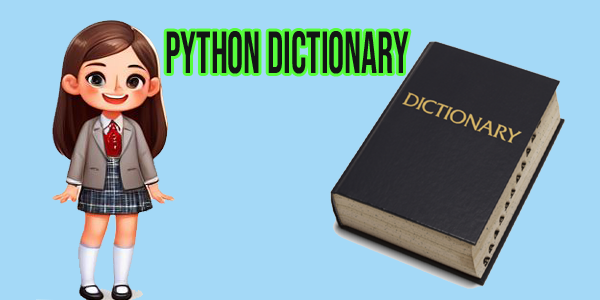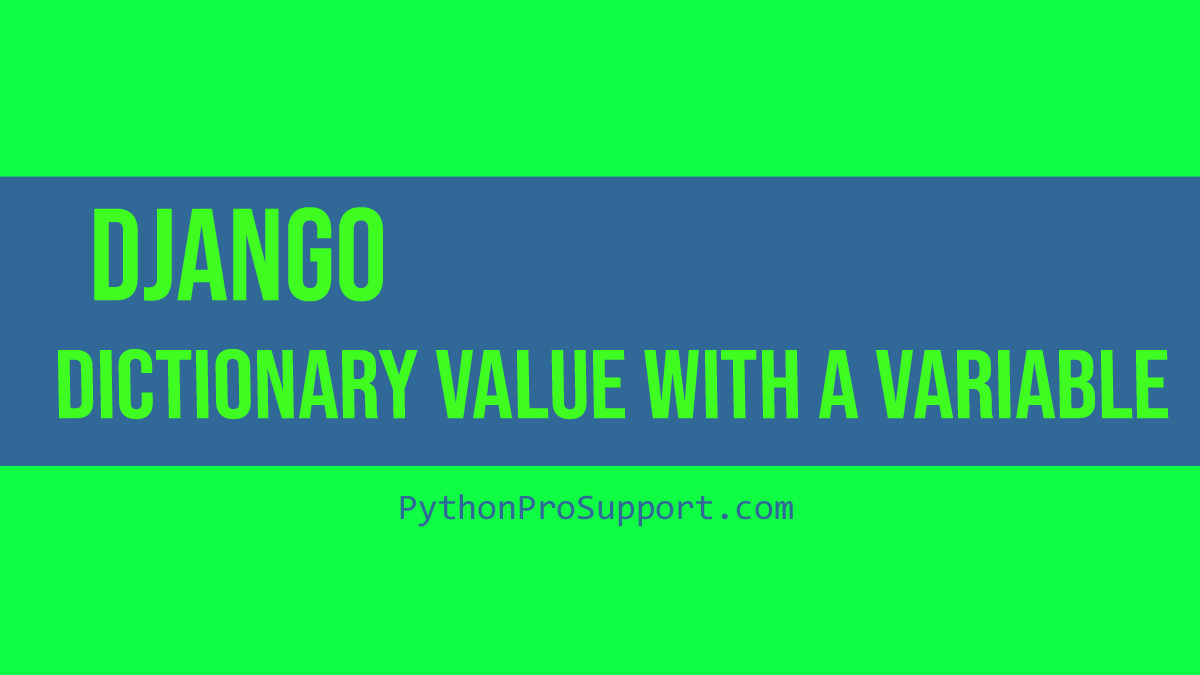Outlines
- 1 To learn about look up a variables in dictionary with Django Templates
To learn about look up a variables in dictionary with Django Templates
In this complete guide, I have cleared everything about looking up a decision value with a variable and its management in the Django templates. There are different best practices and recommendations I have shared with you.

After reading this complete guide you will be able to understand what is looked up variable, and how to use it in the Django template properly with recommendation by an instructor.
In which type of project, you are working?
What is the lookup variable in a dictionary?
If you have cleared the fundamentals of Python dictionary in which we used key-value pairs to manage different types of data. Do you know what is actual lookup variable in a dictionary is? If not then please read! This is about a key, I mean it is the key that has value.
For example:
|
1 |
my_data_dict = {'name':'Ali'} |
In this case ‘name’ is the lookup variable and ‘Ali’ is the lookup value in a dictionary. That is very simple to understand. You can understand observing other examples to clear your mind’s confusion about the lookup variable. Now we want to discuss why you need it in a Django template.
Why need to look up a dictionary value?
You should need such a variable in Django templates because when we get any data from the user in the view function and want to send it to the Django template, in that case, we need to send data to the Django templates through the dictionary lookup variable.
And also it becomes easy for a developer to manage data, as data is stored in proper key value formatted. Another it may need a developer when a developer wants to work on dynamically data, as it will become easy to show data dynamically rather than using a non-denominational way.
When you want to iterate your data differently, that is why we need it in our project.
A little bit of overview of the Python dictionary
We are learning about lookup variables in dictionaries, but do you know about dictionaries in Python? You should know that it is the data structure or data type that is used in Python to store data. Most developers give importance to Dictionary to store and manage user data due to its easy structure and different operations that may be performed on its data.
Key Value formate
Python dictionary has a key and value, key means variable, and value means the value of that variable. This is the syntax to understand more in-depth
|
1 |
my_dict = {'key':'value'} |
‘key’:’value’ is the single item that has its key information and its value, if you want to include another item you have to put a comma after one item. There is no limit, you can insert more items to manage their characteristics.
Coding Example Dictionary
|
1 2 3 4 5 6 7 8 |
employ_info = { 'name': 'Faisal Zamir', 'age': 20, 'gender': 'Male', 'occupation': 'Python Developer', 'skills': ['Python', 'JavaScript', 'Teaching'], 'is_employed': True, } |
In this coding example, there is an employ_info variable in which the dictionary type of data is stored. In this example, we stored information about an employ like his name, age, gender, skills, etc using key-value formate in the curly braces.
One EYE in the Django template?
It is necessary to understand what is template term in the the Django framework. A template is a collection of different web files like HTML, CSS, Javascript, and others related. A template is used to show data (statically or dynamically) to the user. Mostly in web-based applications, the template is matter and dependent, because it renders in the browser and shows the information.
| Serial Number | Django Template Properties | Features |
|---|---|---|
| 1 | Variable | Represents a variable in the template. |
| 2 | Filter | Applies a filter to a variable or expression. |
| 3 | Tag | Defines custom template tags. |
| 4 | Template Inheritance | Allows creating a base template and inheriting from it. |
| 5 | Template Logic | Implements conditional logic and loops in templates. |
To work on a template, you need to create a folder according to your desired name in your Django application folder or the main folder. After that,, you need to create an HTML file and render that in view section. To learn more about the Django template you can put your comment in the the below section.
The best way to look up a dictionary value in Django templates
You know that I have shared syntax with examples to create a dictionary in Python. Now You should know how you can use that dictionary variable or key in Django template.
That is the main concept of this post. For example, you have a Django project, in a Django project you have an application, you create a view section for different functions, and you get different data from the database and want to send that data to a template. (From view section to Template). How you can send your data from view function to an HTML file.? So simple.
Python Django Template Example code
I will follow the example I mentioned above about employee information having different properties like name, age, occupation, skill, etc. That example is written in view section. Next, you need to insert a dictionary variable in the render function like this:
|
1 |
return render(request, 'web_template_fiile.html', {'my_dict_key': employ_info }) |
You have to use ‘my_dict_key‘ in your template to access its value.
then in your template, you have to target your dictionary and access its values:
Method 01 (Recommended method to use:
|
1 2 |
<!-- Assuming 'my_dict_key' is the dictionary variable passed to the template --> {{ my_dict_key.key_name }} |
The key_name name may be a key that is present in your dictionary in the view section like name, age, skill, etc.
Method 02:
|
1 2 |
<!-- Assuming 'my_dict_key' is the dictionary variable passed to the template --> {{ my_dict_key['key_name'] }} |
Handling Missing keys in a dictionary
In case, when there is no such key you are trying to get its value, in that situation you have to give a default value when there is no key present with your request.
|
1 |
{{ my_dict_key.key_name|default:"Requested key is Not Found" } |
Video Tutorial on Look up a dictionary value with Variable
Here is a video guide you can watch to learn more about working with a dictionary looking up variables to get value and using it in Django templates.
What do you make common mistakes?
These are different mistakes often made by developers, I will notify you of the common mistakes while working with Lookup variables in a dictionary and working with a Django template.

You need to read and implement to avoid such mistakes and make your code error-free.
- It is a common mistake when the developer cannot care for the key, whether it is present or not. You need to check whether your requested key is present or not in a dictionary. When you do not check the key you will get an unexpected result and it will waste your time managing and debugging.
- When you modify a dictionary whether its keys or value it affects its result when you go through iteration ways. When you iterate and modify your dictionary you may get different output and unexpected results that you expect.
- Don’t mix your keys with values because sometimes we set similar names for keys and values. We use value as a key, and hence we did not get any results and got errors.
- You should understand that the dictionary cannot have a mutable key. If your kye is the mutable object you may get a different result. So the key should be immutable like a number or string.
Conclusion
Have you understood? If you have understood this guide please say ‘Yes’ in the comment section. You will have read about looking up available Django templates using a dictionary. Different methods I have discussed with examples and best practices also.
What is your level in Django? Beginner, Intermediate or Expert?
Drop your answer in Comment box.
FAQ
What is a look-up variable in Python Dictionary?
The key in the dictionary works as a look-up variable in Python. This key used a variable while working in the Django framework. This key has its value the same as a variable has its value.
Another way to store data in the key-value form in Python?
Yes, these are the different libraries or packages, you can use in your Python code to manage key-value form data instead of using a dictionary. For example collections.defaultdict, collections.Counter, collections.ChainMap.
What is Django?
Django is the platform to create websites, this tool is developed with Python programming to give the facility to developers to make web-based applications. It is the famous and most used library.
Can I enroll in your Django course?
I am creating a different Pyton-related course, not created a course on Django yet. You can subscribe YouTube channel where I will upload a video for the new course announcement.
What prerequisites for learning Django?
If you are interested in learning Django at the beginner level, you need to learn Python first, Django is developed with Python programming. When you understand Python concepts then move to the Django framework understanding its fundamental concepts and workflow.

